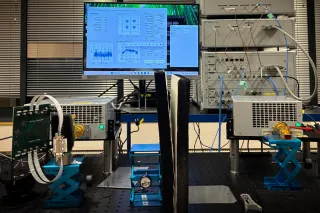A new VTT-led study evaluated the impact of Business Finland’s financing of research, development, and innovation (RDI) activities of Finnish companies over a 24-year period. The findings of the impact evaluation show that receiving an innovation subsidy has been associated with a higher probability of a company introducing a significant innovation to the market. The research also studied methods to forecast future impact of different innovation policy options such as changes in funding conditions or new instruments.
VTT has published results from InnoPact, an extensive 2-year research project into the impact of public RDI financing on the innovation outcomes of Finnish companies between 1995 and 2018. The study is based on a large and uniquely detailed dataset that combines information on companies, RDI subsidies, and innovation information, and contains data on more than 230 000 individual companies and over 2300 significant innovations.
The findings consistently indicate that receiving financial RDI support from Business Finland (and formerly TEKES) has been associated with a raised probability for Finnish companies to innovate during the three years following the subsidy. On average, the probability of a company launching a significant innovation increased by 3.7 – 6.5 percentage points relative to the matching control group that received no subsidies, depending on the type of financing.
Measuring innovation is difficult but crucial
As governments decide on innovation policy, one of the challenges is measuring the impact of the financial support directed at companies. This has historically been a challenging task: availability of data and the hard-to-measure qualities of innovation have led to limited evidence of the benefits of subsidies.
“In Finland, public money has been allocated to promoting innovation for decades, but evidence of the impact on meaningful and commercialised innovations has been limited. We now have a new piece of evidence that suggests a positive impact of public support for innovation and new, forward-looking prototype tools for decision-makers that work on innovation policy,” explains Senior Scientist Robert van der Have from VTT.
For public sector RDI financing to be effective, transparent, and accountable, it is crucial to scientifically evaluate if and where subsidies in fact increase innovation.
“In an era where economic conditions are challenging, and huge technological shifts are taking place, it is vital for Finland to make measured and farsighted investments into innovation. Our future opportunities and resilience both economically and in combatting climate change depend on new innovations,” says Antti Vasara, CEO of VTT.
Research reveals differences between sectors and financing models
The positive impact of subsidies on innovation could be seen across all industries. However, some sectors appeared to benefit from subsidies more than others. Companies in the high-tech sector showed a higher, 7.1 percentage point, difference in probability to successfully launch a significant innovation compared to the control group, for example.
The research also looked into the type of support, comparing results from using grants (mainly used for early-stage support), loans (typically used for later stage support), and their combinations. The type of support showed to make a difference too: While the average marginal effect for grants was 3.68 percentage points and for loans 5.15 percentage point, combinations of both produced strongest impact, 6.52 percentage points higher probability (i.e. about one additional significant and commercialised innovation in 15 funding events).
Positive results were also observed to extend to small and young companies despite having naturally higher risk profiles.
The findings of the evaluation suggest that consistency in financial support for RDI contributes to its impact. To achieve the best societal impact possible through innovation policy, maintaining a long-term view is important.
New tools for future policy
In addition to analysing historical data between 1995 and 2018, the research also explored and developed new data- and impact models for forward-looking impact of prospective innovation policy options. This was achieved by combining multi-criteria evaluation and system dynamic modelling to provide a broad-based and systemic approach to impacts. These approaches were applied to and piloted for the Finnish artificial intelligence sector in collaboration with Gofore Oy.
The results indicate that evaluating impact is required before innovation policy and financing decisions are made. They also show that integrating innovative data-driven methods like system dynamics modelling with qualitative evaluation approaches can be used to improve the impact of innovation policy and produce valuable insights and guidance.
You can find additional information in our policy briefs:





